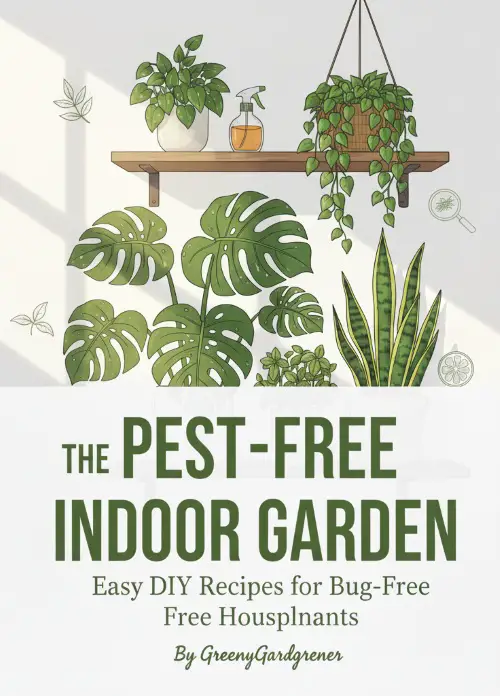Are Pothos Toxic to Dogs? A Comprehensive Guide for Pet Owners
Pothos (Epipremnum aureum), commonly referred to as Devil’s Ivy, is a staple in many homes due to its aesthetic appeal and low-maintenance care. However, for dog owners, the question arises: Are pothos plants toxic to dogs? The answer is a resounding yes.
In this detailed guide, we will explore the dangers of pothos for dogs, the symptoms of toxicity, and actionable steps to ensure your furry friend remains safe.
What's On the Page
- 1 What Makes Pothos Toxic to Dogs?
- 2 How Do Dogs Get Exposed to Pothos?
- 3 Symptoms of Pothos Toxicity in Dogs
- 4 What to Do If Your Dog Eats Pothos
- 5 Preventing Pothos Toxicity in Dogs
- 6 Pet-Safe Alternatives to Pothos
- 7 Why It’s Important to Research Houseplants for Pet Safety
- 8 Conclusion: Keep Your Dog Safe from Pothos
What Makes Pothos Toxic to Dogs?
Pothos plants contain insoluble calcium oxalates, which are tiny, needle-like crystals found in all parts of the plant, including the leaves, stems, and roots. When ingested by dogs, these crystals can cause irritation to the mouth, throat, and digestive system. Additionally, exposure to the plant’s sap may result in skin irritation in some pets.
Although pothos is not classified as fatal, it poses significant health risks that require prompt attention if consumed by dogs.
How Do Dogs Get Exposed to Pothos?
Dogs are naturally curious creatures. They may chew on houseplants out of boredom, teething discomfort, or simple curiosity. Pothos, with its long, trailing vines and vibrant green leaves, can be particularly enticing.

🌿 The Companion Planting & Gardening Book (eBook)
Bigger harvests, fewer pests — natural pairings & simple layouts. $2.40
Get – $2.40
🪴 The Pest-Free Indoor Garden (eBook)
DIY sprays & soil tips for bug-free houseplants. $1.99
Get – $1.99Common scenarios include:
- Dogs chewing on pothos vines that hang within reach.
- Puppies exploring new textures by nibbling on leaves.
- Dogs playing near plant pots and accidentally ingesting small plant pieces.
Symptoms of Pothos Toxicity in Dogs
If your dog has come into contact with or ingested any part of a pothos plant, they may exhibit the following symptoms:
1. Oral Irritation
- Drooling excessively
- Pawing at the mouth
- Visible swelling in the lips, tongue, or mouth
2. Gastrointestinal Distress
- Vomiting
- Difficulty swallowing
- Reduced appetite
- Abdominal pain
3. Respiratory Issues
- Labored breathing
- Whining or crying due to throat discomfort
4. Behavioral Changes
- Restlessness or agitation
- Hiding or avoiding interactions
- Lethargy in severe cases
While most cases of pothos toxicity result in mild to moderate symptoms, some dogs, particularly small breeds or those with pre-existing health conditions, may experience more severe reactions.
What to Do If Your Dog Eats Pothos
If you suspect that your dog has ingested any part of a pothos plant, follow these steps immediately:
Step 1: Remove Access
Take the plant away and ensure your dog does not consume any more of it. Dispose of any chewed-up leaves or stems safely.
Step 2: Check for Symptoms
Monitor your dog closely for the symptoms mentioned above. Even if your pet seems fine initially, symptoms may develop over several hours.
Step 3: Rinse Their Mouth
If your dog shows signs of oral irritation, rinse their mouth gently with water to remove plant residue.
Step 4: Contact a Veterinarian
Call your veterinarian or an emergency animal poison control hotline, such as the ASPCA Animal Poison Control Center. Be prepared to provide details about the plant and your dog’s symptoms.
Step 5: Follow Professional Advice
Your vet may recommend bringing your dog in for treatment or monitoring them at home. In severe cases, supportive treatments such as IV fluids or medications to manage symptoms may be necessary.
Preventing Pothos Toxicity in Dogs
As the saying goes, prevention is better than cure. Protect your furry friend by taking these precautionary measures:
1. Keep Plants Out of Reach
Place pothos plants on high shelves or hanging baskets where your dog cannot access them. Ensure that no vines dangle within their reach.
2. Choose Pet-Safe Plants
Consider replacing toxic plants like pothos with pet-friendly alternatives such as spider plants, Boston ferns, or parlor palms.
3. Use Deterrents
Spray plants with a pet-safe deterrent, such as bitter apple spray, to discourage chewing.
4. Provide Enrichment
Ensure your dog has plenty of toys and activities to reduce boredom, which can lead to chewing on inappropriate items.
5. Educate Household Members
Make sure everyone in your home is aware of the dangers of pothos and other toxic plants. Consistent vigilance is key.
Pet-Safe Alternatives to Pothos
If you love the greenery and aesthetic appeal of houseplants but want to ensure your dog’s safety, consider these non-toxic alternatives:
1. Spider Plant (Chlorophytum comosum)
Spider plants are hardy, easy to care for, and safe for dogs. Their arching leaves add a touch of elegance to any space.
2. Boston Fern (Nephrolepis exaltata)
Known for its lush foliage, the Boston fern thrives in humid environments and poses no threat to pets.
3. Parlor Palm (Chamaedorea elegans)
This slow-growing plant is both pet-safe and visually striking, making it a great addition to any home.
4. Calathea
Calathea plants come in various patterns and colors. They are safe for dogs and thrive in low to medium light.
5. Areca Palm
With its feathery fronds, the areca palm is another pet-friendly option that adds a tropical vibe to your home.
Why It’s Important to Research Houseplants for Pet Safety
Many common houseplants are toxic to pets, and pothos is just one of them. As responsible pet owners, we must ensure that our living spaces are both beautiful and safe for our furry companions. By researching the plants you bring into your home, you can prevent unnecessary trips to the vet and provide a safe environment for your dog.
Conclusion: Keep Your Dog Safe from Pothos
Pothos plants are beautiful but pose significant risks to dogs due to their toxic properties. If you currently have pothos in your home and share your space with a dog, take immediate precautions to prevent access or consider replacing the plant with a pet-safe alternative.
Your dog’s health and well-being should always come first. By creating a safe and enriching environment, you can enjoy the company of your furry friend without the worry of accidental poisoning.
- Lady Bug For Garden – Your Ultimate Guide To Natural Pest Control - December 22, 2025
- Easy Ladybug – Your Ultimate Guide To Attracting Beneficial Beetles - December 22, 2025
- Weed Killer Safe For Dogs And Grass – Your Ultimate Guide To A - December 22, 2025
